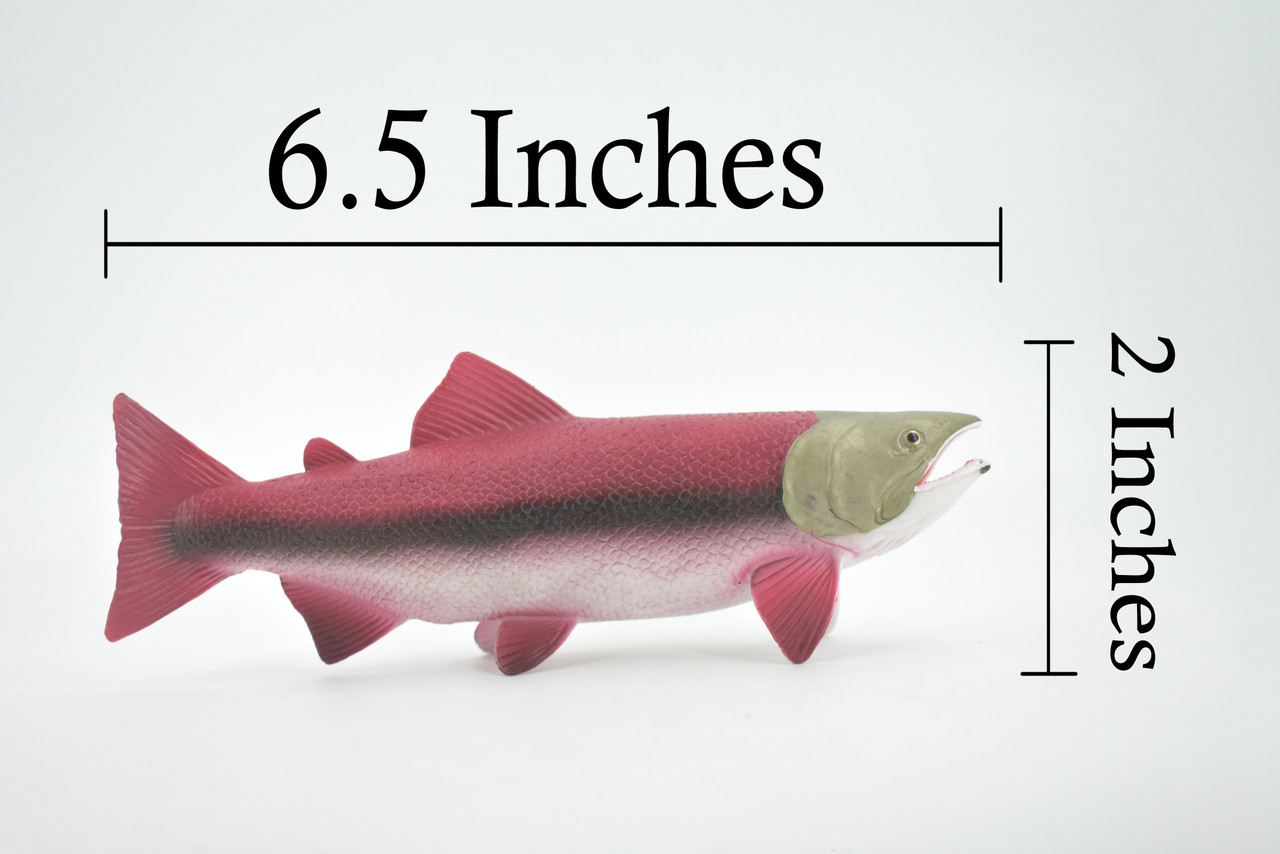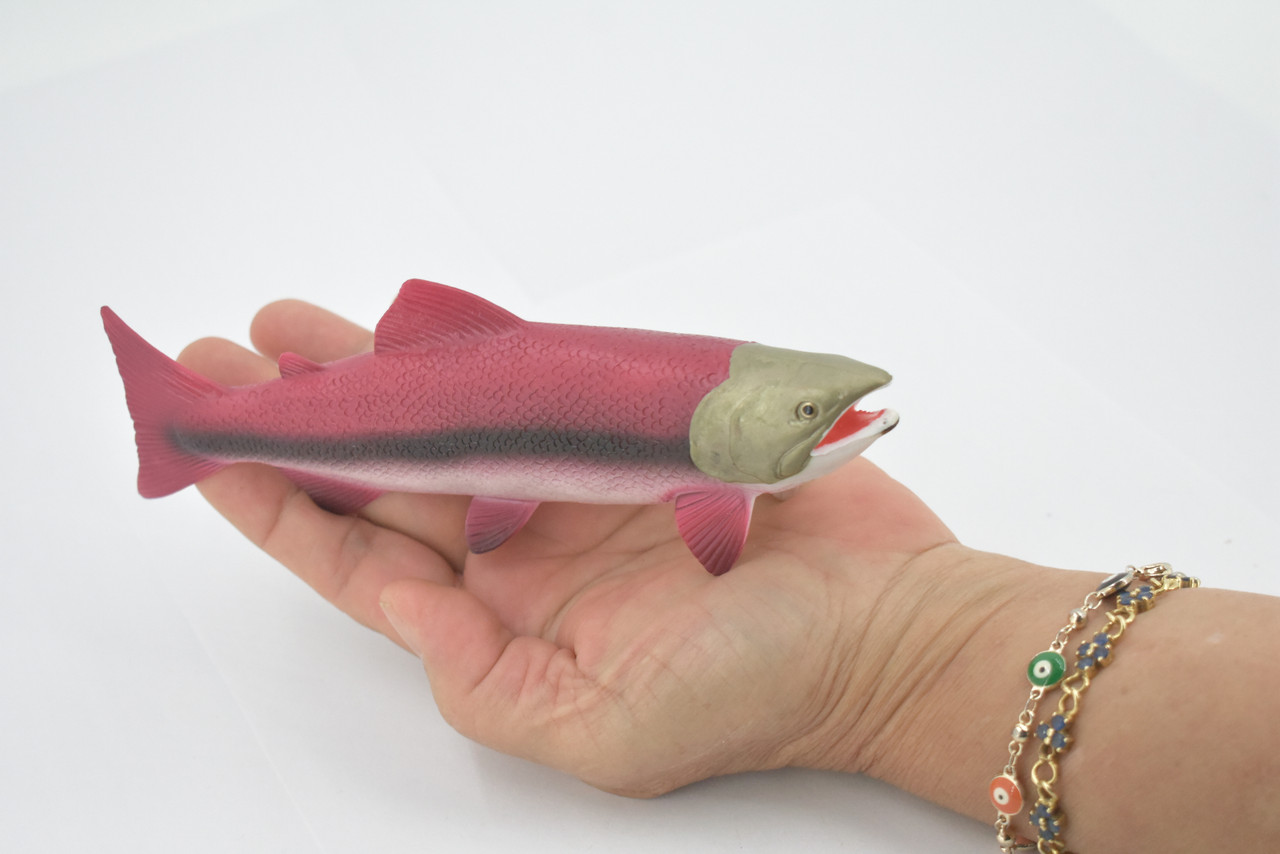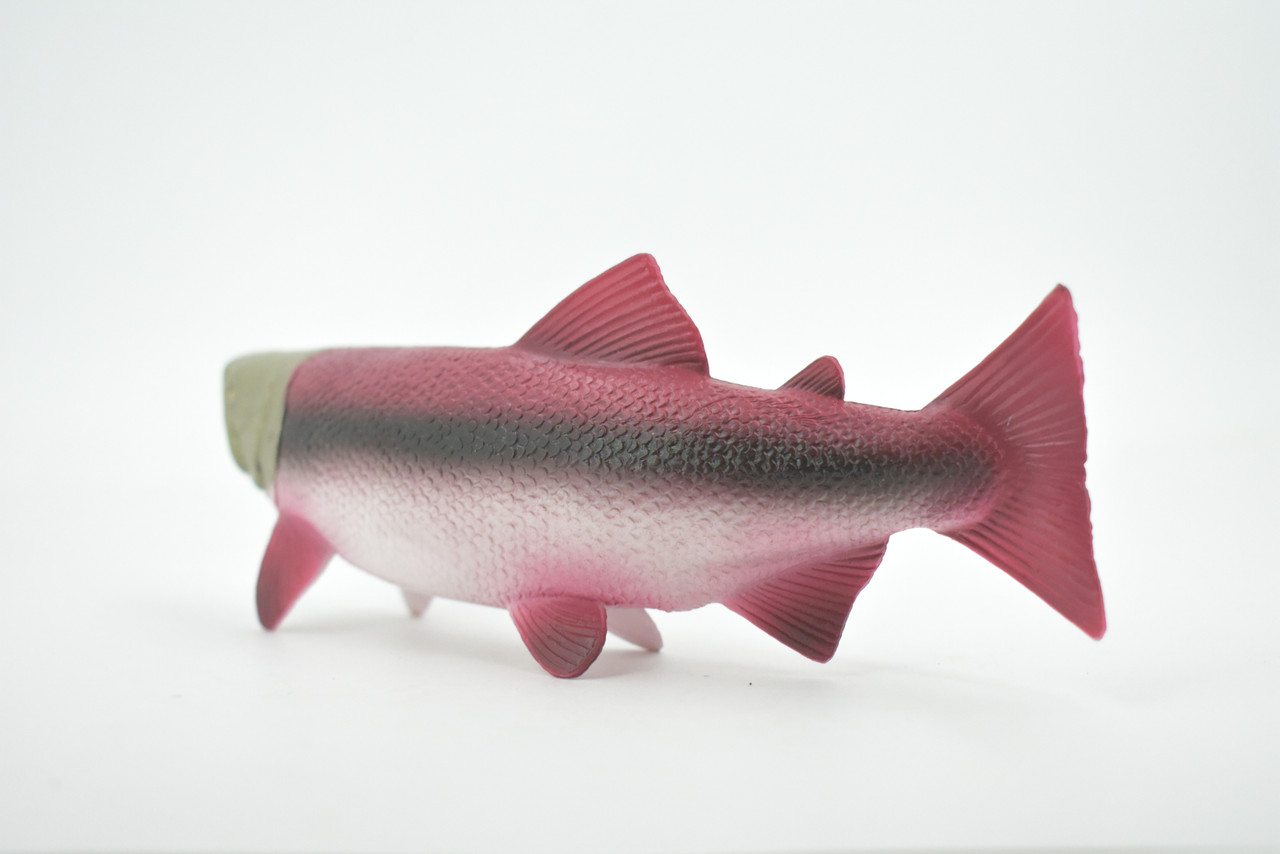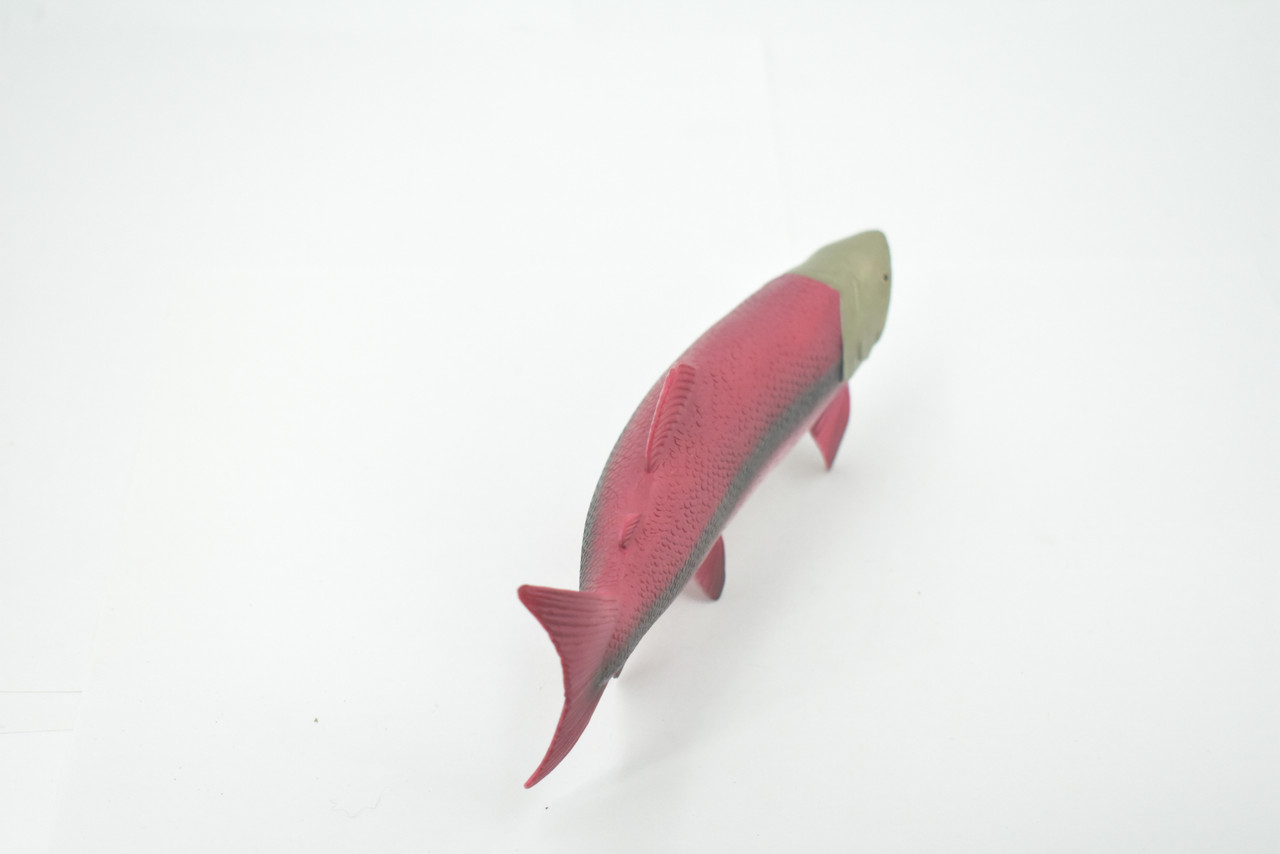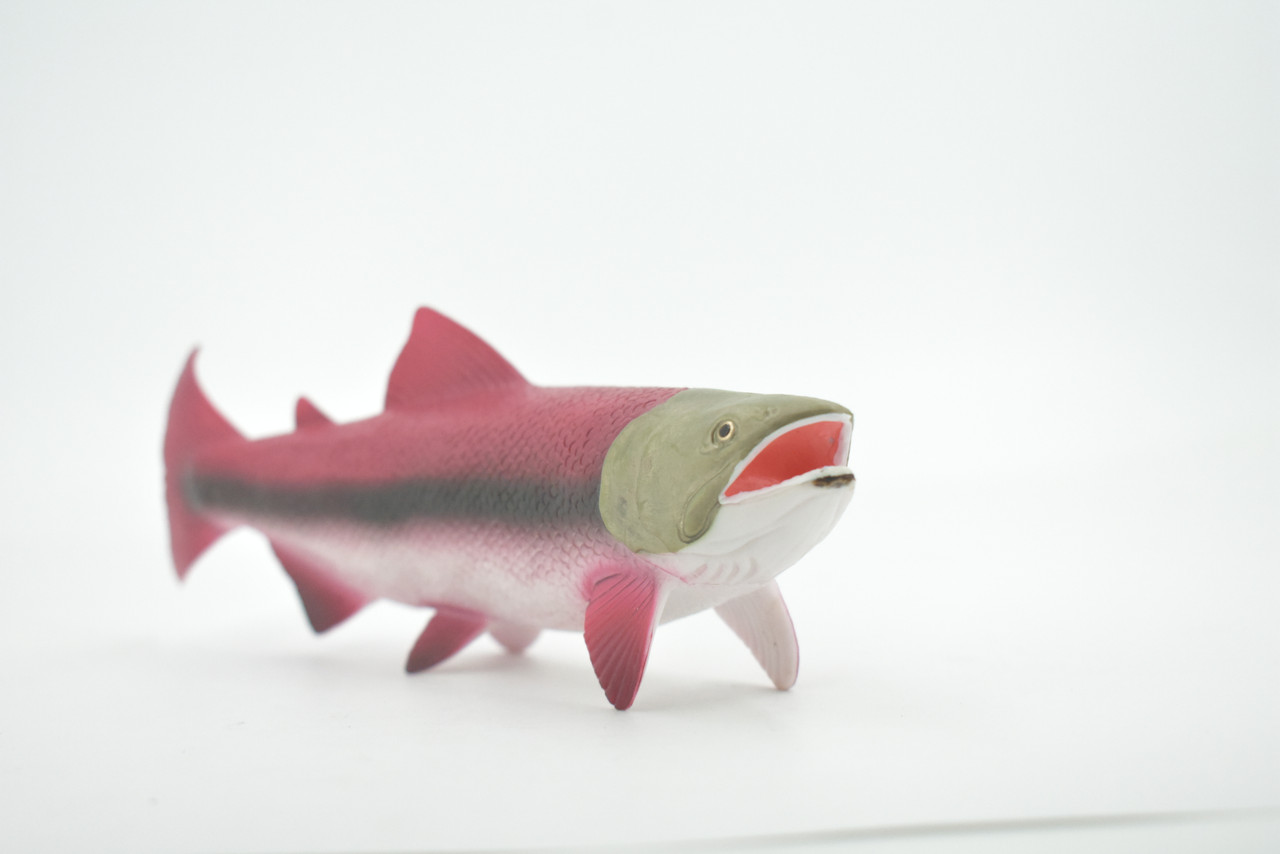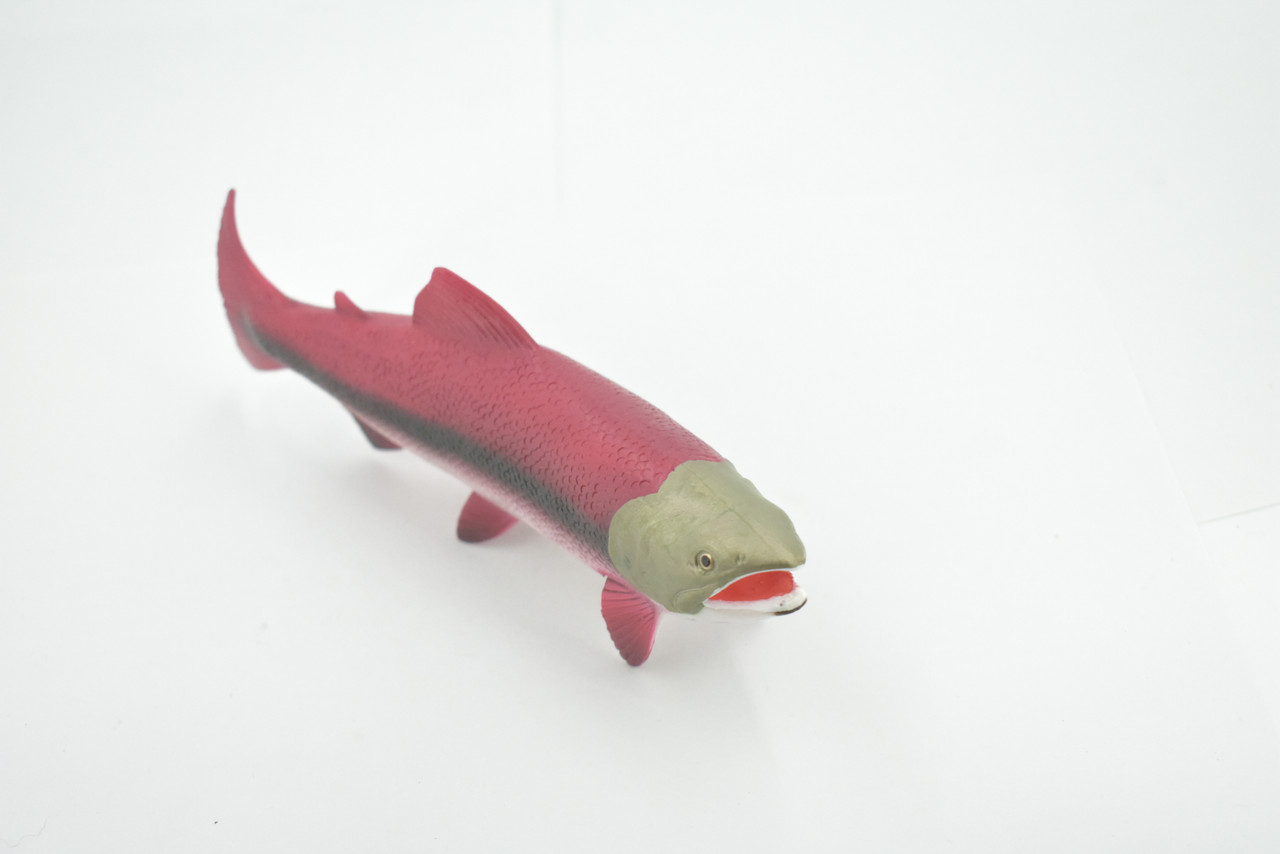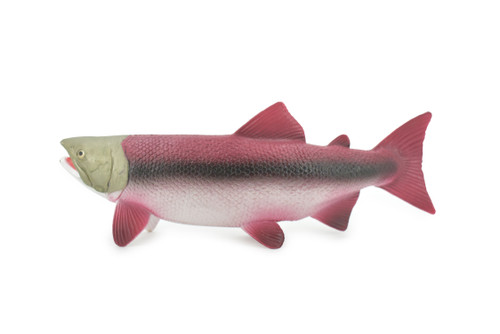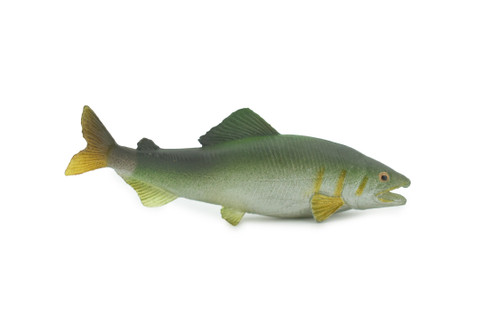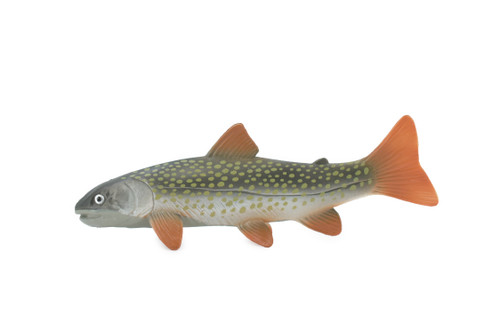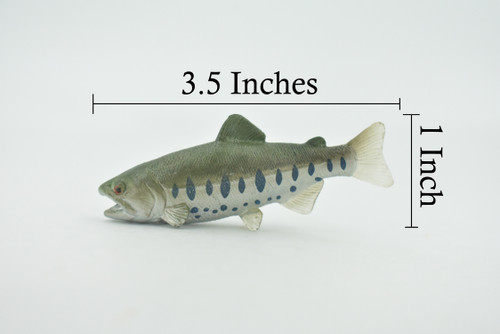Product Description
This Coho salmon, 6 1/2" figure includes hand painted features to give it realistic details that are true to natural anatomy. This figure is considered a museum quality replica. Highest Quality Natural Rubber.
Coho salmon enter spawning streams from July to November, usually during periods of high runoff. The female digs a nest, called a Red, and deposits 2,400 to 4,500 eggs. As the eggs are deposited, they are fertilized with sperm, known as milt, from the male. The eggs develop during the winter, hatch in early spring, and the embryos remain in the gravel utilizing their egg yolk until they emerge in May or June. During the fall, juvenile Coho may travel miles before locating off-channel habitat where they pass the winter free of floods. Some fish leave fresh water in the spring and rear in brackish estuarine ponds and then migrate back into fresh water in the fall. They spend one to three winters in streams and may spend up to five winters in lakes before migrating to the sea as smolt. Time spent at sea varies. Some males (called jacks) mature and return after only 6 months at sea at a length of about 12 inches, while most fish stay 18 months before returning as full size adults. Adults usually weigh 8 to 12 pounds and are 24 to 30 inches long, but individuals weighing 31 pounds have been landed. Adults in salt water or newly returning to fresh water are bright silver with small black spots on the back and on the upper lobe of the tail fin. They can be distinguished from Chinook salmon by the lack of black spots on the lower lobe of the tail and by their white gums; Chinook have small black spots on both tail fin lobes and they have black gums. Spawning adults of both sexes have dark backs and heads with maroon to reddish sides. In freshwater, Coho fry feed voraciously on a wide range of aquatic insects and plankton. They also consume eggs deposited by adult spawning salmon. Their diet at sea consists mainly of fish and squid. Little is known about the ocean migrations of Coho salmon. High seas tagging shows that maturing Southeast Alaska Coho move northward throughout the spring and appear to concentrate in the central Gulf of Alaska in June. They later disperse towards shore and migrate along the shoreline until they reach their stream of origin. The emergent fry occupy shallow stream margins, and, as they grow, establish territories which they defend from other salmonids. Coho fry live in ponds, lakes, and pools within streams and rivers, usually among submerged, woody debris- in quiet areas free of current. Coho are found in coastal waters of Alaska from Southeast to Point Hope on the Chukchi Sea and in the Yukon River to the Alaska-Yukon border. Coho are extremely adaptable and occur in nearly all accessible bodies of fresh water, from large trans-boundary watersheds to small tributaries.
Thanks for visiting Collectible Wildlife Gifts, the leading provider of high-quality, lifelike animal Designs and gifts! We work hard to ensure we have a diverse range of products. Each product is inspected for their quality craftsmanship. Whether you're searching for a great gift or seeking educational designs for displays, we’ve got you covered.
At Collectible Wildlife Gifts, our products appeal to a wide range of customers, including family, friends, and educators. Our products are trusted and used by professional organizations as well including aquariums, zoos, and movie studios.
Our extensive line of products boasts everything from plush sharks to educational animal growth cycles. Our products bring joy to recipients, and serve as valuable educational resources, sparking curiosity and fostering learning.
Discover the wonders of the natural world with Collectible Wildlife Gifts. Browse our collection today!


